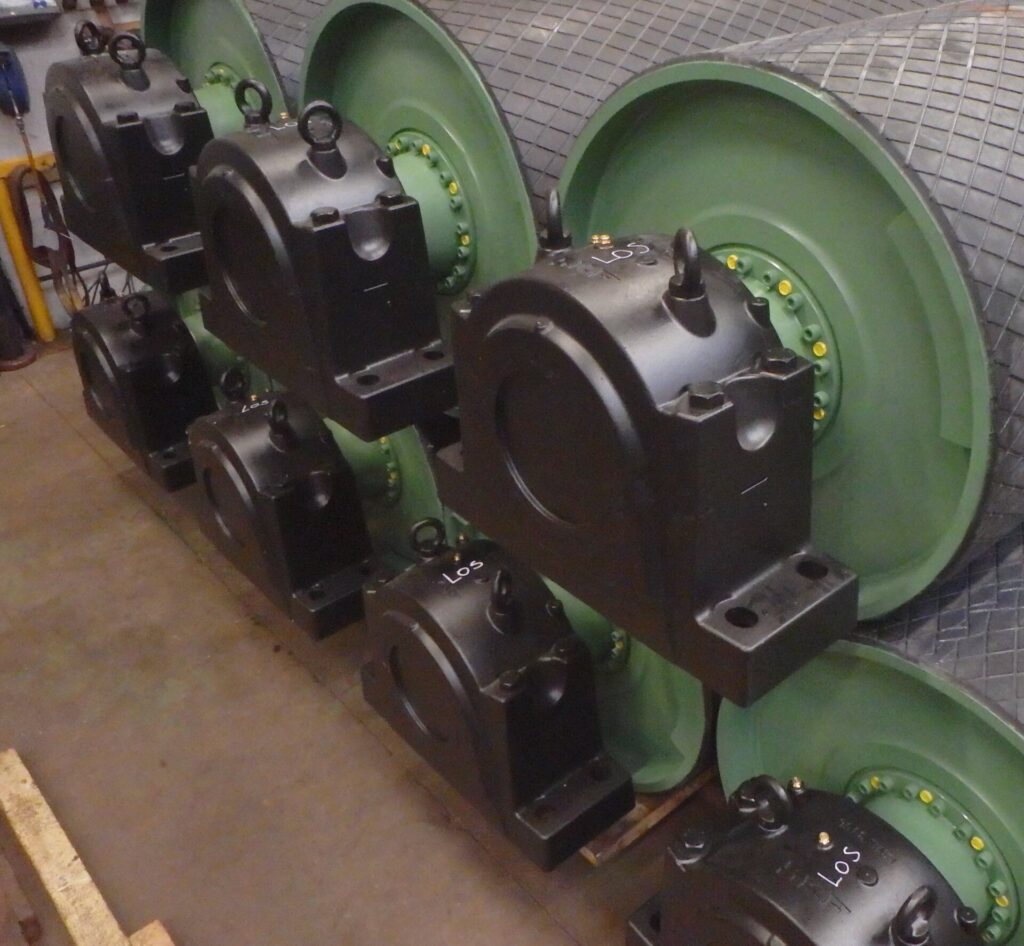The importance of the drive pulley in a conveyor belt system
How is a conveyor belt driven? The simple answer is: the electrically or hydraulically powered drive pulley. In this blog, we will take a closer look at how the conveyor belt and the pulley that drives the belt work. We will also look at the options and choices for Stokman drive pulleys.
Drive pulley for conveyor belts
The name actually says it all, the drive pulley drives the conveyor belt. The drive pulley is preferably placed at the head of the belt where the power that is required and the resulting belt tension and belt stress will be lowest. A drive pulley on the tail end is often used when the head of the belt has to be made as light as possible from a constructional point of view. For example, if the head of the belt system has a free span. The extra weight of the drive system is then taken away from the head of belt system resulting in a lighter construction.
The conveyor belt is driven by the friction between the contact surface of the drive pulley body and the rubber coating of the conveyor belt. The greater this surface area the more friction.
In very long conveyor systems where high power is required, several drive pulleys can be placed in different arrangements. This can be done by placing a drive pulley at the head as well as at the tail end of the belt, or two drive pulleys closely together at the head (called a tandem drive). In extreme cases even a tandem drive on both the head and tail end of the conveyor belt system.

Rubber coating drive pulley
Friction between the drive pulley and the conveyor belt is essential to power the conveyor system. Since conveyor systems for bulk handling are often placed outside in the open air, rainwater and other environmental factors can make the conveyor belt slippery. This reduces friction with the drive pulley and may cause the belt to slip and not move efficiently.
To prevent this and create more friction between the drive pulley and the conveyor belt, Stokman pulleys are lined with rubber or a combination of rubber and ceramic. This lining has a profiled surface to drain off water and prevent aquaplaning and slippage.
Electric or hydraulic drive pulley
A drive pulley can be single-sided or double-sided, a double-sided pulley provides 2 drives per pulley. The required drive power will determine whether a pulley is to be single or double sided.
Conveyor belts are powered electrically or hydraulically. Electric drives consist of an electric motor with a gearbox. The advantage of electric drives is that electricity is available in most locations (especially on land).
Hydraulic motors are driven by a high-pressure pump that pumps hydraulic oil through the motor, causing it to rotate. Hydraulic drives are often used in locations where a hydraulic system is already in place. Hydraulic drives are more compact and lighter in weight while still providing high working torque. This is why these types of drives are often used on ships and other offshore installations. Every kilo less in the installation allows for a kilo more load. The disadvantage of hydraulic drives is the high cost compared to electric drives.
Do you have any questions about drive pulleys or other Stokman products? Please, contact us. We like to get in touch with you!

